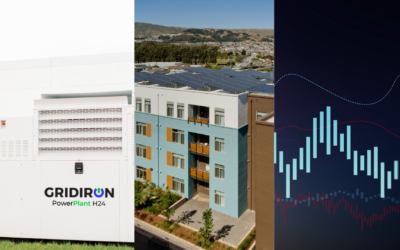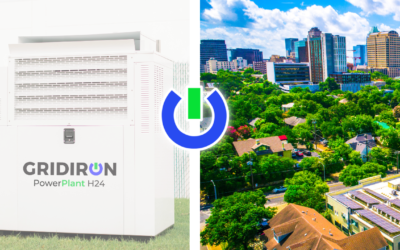Environmental, social, and governance (ESG) measures are an important consideration for businesses, but the process for reaching a favorable ESG rating is not always straightforward. One clear path to improving environmental initiatives, and targeting the “E” in ESG, is lowering greenhouse gas emissions. Onsite energy solutions, such as the PowerPlant H24 micro-Combined Heat and Power unit, not only reduce emissions but is also a simple step forward for businesses looking for control over their energy and ESG ratings. The other good news? These solutions are already available through products like GRIDIRON’s PowerPlant H24.
Grid Energy’s Impact on U.S. Emissions
According to the U.S. Energy Information Administration, the U.S. generated 1.55 billion metric tons of carbon dioxide – the equivalent of 0.85 pounds of CO2 emissions per kWh. The generators of these carbon dioxide emissions—conventional power plants—can run on burned coal, natural gas, and petroleum fuels. In 2020, these fuel sources produced 62% of the total electricity in the United States, but virtually all (99%) of electricity-related carbon dioxide emissions[1]. A key opportunity for reducing energy’s environmental impact exists, and it can take the form of cost-effective, efficient, and reliable on-site energy.
Redefining Energy: GRIDIRON PowerPlant H24 Reduces Emissions
There are three reasons why GRIDIRON’s product has low emissions:
- The PowerPlant H24 runs on clean-burning natural gas
- Its high-efficiency design delivers up to 88% of the energy consumed, and
- It produces energy on-site, so there are no transmission losses.
So, in most locations in the United States, GRIDIRON’s PowerPlant H24 dramatically reduces emissions relative to the conventional grid system. Recent data shows that using the PowerPlant H24 could reduce a business’s carbon footprint by as much as 69%, significantly improving environmental impact and ESG ratings (see figure below).

Picture source: GRIDIRON Emissions Testing Data & https://www.epa.gov/egrid/power-profiler#/AZNM
To put this in perspective, a business in Ohio that displaces 300,000 kWh from the grid with the PowerPlant H24 could realize a 108,000-pound or 54-ton reduction each year in carbon dioxide emissions.
Implications of Onsite Energy for Future Generation
Onsite energy is set to have a large impact on how energy is produced. Creating controllable, efficient micro-sites for energy production and consumption not only has a large impact on a business’s bottom line but also on the environment.
It is clear that the standard operating procedure for energy production and consumption will transform in the years to come. The power grid has become outdated, inefficient, and costly. Onsite energy will become the future of energy, and its impacts are already being realized.
To learn more about onsite energy and possible applications of the PowerPlant H24, visit GRIDIRONenergy.com.



